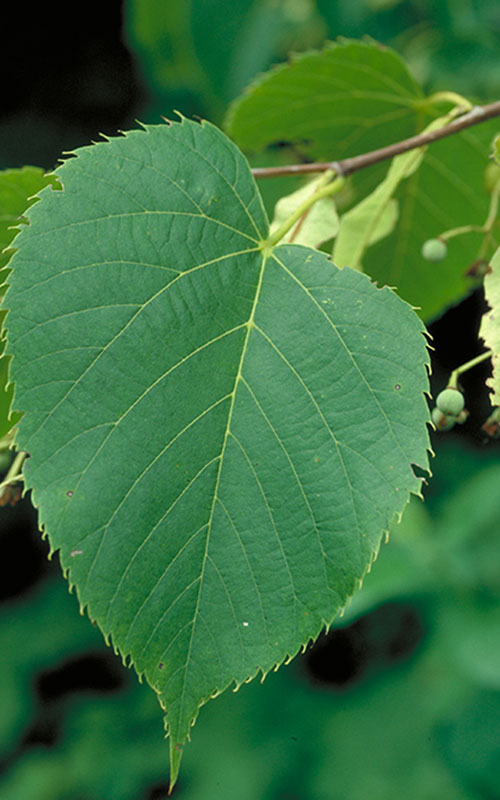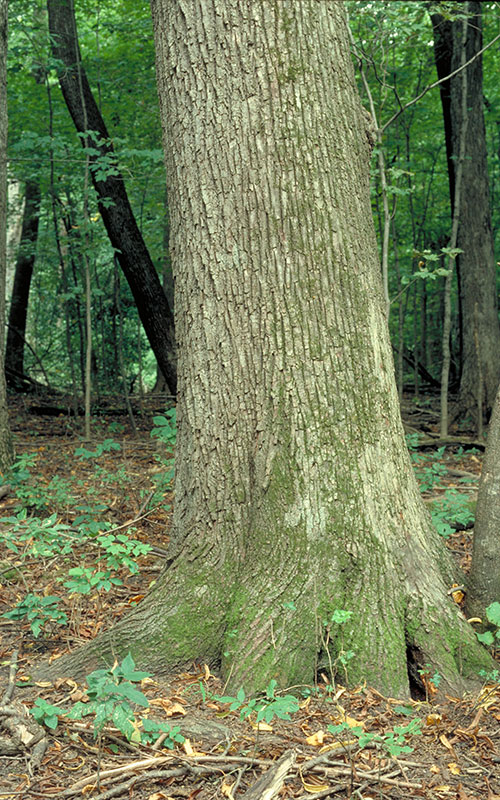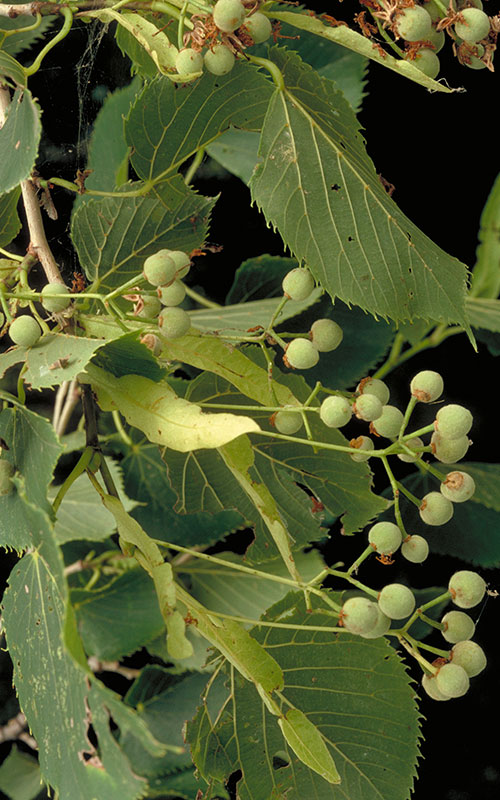American Basswood
(Tilia americana)
Description
-
Leaves coarsely toothed – simple
-
Scientific name: Tilia Americana L.
-
Broadly oval leaves – turn yellow in fall – heart-shaped
-
Grows 60 to 80 feet tall
-
Conical in its younger form, the crown becomes rounded with age
-
Tends to sprout at base. Frequently has two or more trunks
-
When flowering, trees are full of bees, hence the name “Bee Tree”
-
Deciduous
Habitat
-
Upland deciduous woods, north and east slopes of mesic ravines
Range
-
Found from Canada to Alabama, west to Texas, Kansas, and North Dakota
History
-
Native peoples made ropes and woven mats from the tough fibrous inner bark as well as nets, clothing, and thread.
-
Native Americans drank Basswood sap as a watery drink or boiled it into syrup.
-
All parts of Basswood are useable, and most are also edible: flowers, seeds, buds, and sap.
Current use
-
The soft white wood is useful for making food boxes, yardsticks, furniture, and Venetian blinds.
-
Used by wood carvers.
-
Provides abundant nectar for insects.
-
The seeds are eaten by chipmunks, mice, squirrels, and songbirds.
-
Rabbits and voles eat the bark.
Mission
-
How many different insects and birds can you find on the Basswoods along the trail?
-
What do Basswood flowers taste like?
-
Collect a Basswood leaf. What are the characteristics that make it a Basswood leaf?
Photo Reprinted with Permission, Minnesota Department of Natural Resources
This page was created by a Master Naturalist volunteer. The Minnesota Master Naturalist program is sponsored by University of Minnesota Extension.





